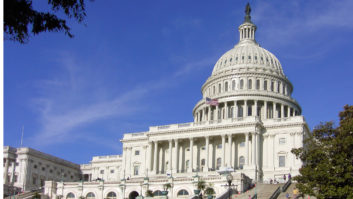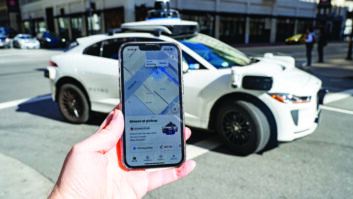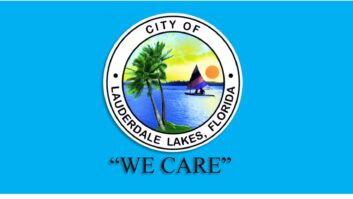Comments are in on the issue of whether and how to allow stations to increase FM IBOC power level in order to match their analog coverage areas. Federal Communications Commission employees are now studying the comments.
Experts meanwhile predict it will take several months for a decision to be reached, enough time to allow additional testing.
As of Dec. 5, the main comment deadline, more than 65 comments had been filed with the agency to MM Docket 99-325. Here is a selection. Reply comments are due Jan. 12, 2009.
The Joint Parties strongly urge the commission to increase the maximum digital power at which FM stations are permitted to operate from the current level of 1 percent (–20 dBc) to 10 percent (–10 dBc) of a station’s authorized analog power. …
Approximately 1,800 radio stations have already initiated digital operation with more than 930 additional multicast channels available nationwide.
However, the effectiveness of many HD Radio stations remains hampered by their inability to replicate their analog coverage areas. This abbreviated digital audience reach is a function of the very conservative power levels at which FM digital stations initially have been permitted to operate. The requested power increase would directly address this problem.
The power increase request is based on extensive real-world studies conducted by several broadcasters and iBiquity Digital Corp. that were designed to determine: (i) whether the digital power increase would enhance the performance of FM HD Radio, both in terms of increased digital service areas so as to essentially replicate analog coverage, and with respect to enhanced building penetration; and (ii) the effect of the requested power increase on digital/analog compatibility — specifically, the impact of increased digital power operation on first adjacent analog operations. …
The Joint Parties have reviewed the digital interference study prepared by NPR Labs and note that it included multiple laboratory predictions and utilized a worst-case scenario; namely, that in predicting interference to each analog station, NPR assumed that all adjacent stations were operating digital at the full 10 percent increased power level. …
NPR has publicly stated that it is not fundamentally opposed to — and sees the need for — a substantial digital power increase. Thus, the Joint Parties hope to work with iBiquity and NPR Labs to identify those circumstances in which a particular FM station’s digital operations may need to be conditioned to avoid unacceptable levels of harmful interference.
— The above was signed by Backyard Broadcasting, Beasley Broadcast Group, Black Crow Media Group, Bonneville International, Broadcast Electronics, CBS Radio, Clear Channel Communications, Commonwealth Broadcasting, Commonwealth Public Broadcasting, Continental Electronics, Cox Radio, Emmis Communications, Entercom Communications, Greater Media, Harris, Journal Broadcast, Lincoln Financial Media, Nassau Broadcasting Partners, Nautel Maine, NRG Media and Sacred Heart University
NPR is committed to HD Radio and improving HD Radio coverage by increasing authorized digital sideband power. Where we differ with the Joint Parties is on the approach. An across-the-board 10 decibel (“dB”) power increase fails to account for a significant increase in interference to the protected analog service of a number of stations. Based on extensive testing by NPR Labs, a managed power increase can significantly improve HD Radio coverage without sacrificing analog service. …
That the proposed power increase of up to 10 times the present level is voluntary does not solve the problem because the stations suffering interference will have had no choice in the matter. …
Given the importance of improving HD Radio coverage, NPR, CPB, iBiquity and others committed to the future of over-the-air radio broadcasting and the HD Radio transition are already discussing alternative approaches to increasing IBOC power without causing undue analog interference. NPR recognizes that any method must be manageable from a regulatory standpoint, meaning generally applicable, simple to apply, and producing predictable results. We have already developed an interference protection approach for stations in the non-reserved portion of the FM band based on distance separation and facility class. …
For stations in the NCE reserved portion of the FM band, we believe a prohibited contour overlap protection methodology similar to that prescribed in the commission’s rules would effectively address the issue. The prohibited overlap method to regulate IBOC power may also apply to short-spaced stations in the non-reserved portion of the FM band and, eventually, stations that wish to employ directional IBOC transmitting antennas or transmission with asymmetrical IBOC sideband techniques to operate at greater IBOC power than would otherwise be authorized. …
NPR Labs has already begun intensive technical planning to carry out additional testing … We expect the necessary testing will be conducted and completed in the next several months so that we may recommend a consensus approach for increasing IBOC transmission power while more effectively avoiding interference by the spring.
— NPR
For CEA and its members, concerns about service reliability present marketing challenges. Consumers purchasing CEA member products may become dissatisfied with their purchases if the receiver repeatedly loses digital reception or is not able to receive digital signals indoors in areas with good analog reception. Returns or warranty claims based on inadequate signal level rather than product malfunction create problematic costs for CEA member companies.
CEA anticipates these concerns will multiply as new classes of HD Radio receivers reach the marketplace. For example, portable products remain one of the most important and growing segments of the audio marketplace, but they also present some of the most challenging environments for radio reception. …
CEA supports increasing digital power levels subject to one important condition: digital broadcasts should not be permitted to cause harmful interference to existing analog receivers. Examples of harmful interference may include (but may not be limited to): 1) an increase in the number of unwanted analog FM receiver “seek stops” on digital side bands (already an issue at existing HD Radio power levels); 2) an increase in the amount of 200 kHz adjacent channel digital interference onto analog FM receivers; and 3) decreased performance of the analog FM Radio Broadcast Data System. …
CEA understands that NPR and the commercial broadcasters that worked with iBiquity to prepare the iBiquity report each intend to conduct additional field testing and analysis to determine with greater precision whether a digital increase will create harmful interference and if so, what restrictions need to be adopted to minimize interference. CEA supports these ongoing activities and recommends that the commission consider requiring additional testing and analyses by independent organizations as well.
James W. Hedlund
Vice President, Regulatory Affairs
Consumer Electronics Association
The justification for the +10 dB increase in digital power is justified under the premise that such an increase is needed in order for digital radio to achieve building penetration and this is needed in order for this new service to be competitive. However, when initially applying to create this new digital radio service, had the petitioners indicated that a digital facility operating at 1 percent of the analog power (authorized by subsequently adopted rules) was insufficient as now being argued and that a 10 percent digital power would be needed, it is likely that petitioner would not have been successful in creating its sole source digital system.
At this higher digital power level the adjacent interference caused is significantly larger to the point of being unacceptable to analog FM stations (see NPR study). Now many years later, they come before the commission under the premise that this sole source digital technology service offered by iBiquity is somehow “too important to fail.”
This sounds just like the arguments being offered by many financial institutions and manufacturers in their weak justification of why Congress must bail them out of the mess that in some instances they were responsible for creating. IBiquity has nobody to blame for its problems but itself. …
In 1989, when adopting the power increase from 3 to 6 kW for Class A FM stations, the commission declined to make a blanket across-the-board authorization. The FCC felt that a +3 dB increase had the potential to cause just too much interference if the new spacings were not met.
However, here the FCC is asked to provide a +10 dB increase to digital radio facilities without regard to increased interference to analog FM stations. While this interference is extremely harmful to full-service FM facilities, it will be simply devastating to the many low-power FM stations the commission hopes to use to promote localism.
John J. Mullaney
President
Mullaney Engineering Inc.
BMW of North America LLC was the first to offer HD Radio as an option in our vehicles and it is now available as an option in every model. It is our plan to include HD Radio as a standard feature in our future models.
In BMW of North America’s experience with the technology, HD Radio technology can offer important benefits to consumers in terms of upgraded audio and new services. …
BMW of North America remains concerned, however, that these benefits of HD Radio technology will not be accepted by the public unless HD Radio technology is able to replicate analog coverage in a greater number of cases. Although there are many stations that enjoy excellent digital coverage, there are a number of stations that are not able to replicate their analog coverage with the current configuration of the HD Radio system.
These coverage problems are particularly problematic in a vehicle environment. Mobile reception is inherently more susceptible to multipath interference and other impairments that can vary considerable in very short time frames as a vehicle goes in and out of areas of interference.
Francis J. Dance
Telematics Business Development Manager
BMW of North America
[The National Translator Association] does not object in principle to an increase in the IBOC signal, so long as both the input signals and output signals — and hence the effective service areas — of FM translators are accorded appropriate interference protection. …
If the commission determines it is in the public interest to allow increases in the strength of the IBOC signals we believe such increases should each require an application and a granted construction permit and that each application should include the results of an engineering study demonstrating that no significant interference to other stations will result. Both the input signal and the service areas of FM translators should be included in the protected service.
B. W. St. Clair
President
National Translator Association
WNYC Radio, New York City, N.Y. (93.9 MHz and 820 KHz) is a committed AM and FM HD Radio broadcaster very much interested in furthering developments in HD Radio technology, yet after reviewing the studies available to us to date we must stand opposed to an across-the-board 10 percent FM HD power level increase.
WNYC Radio’s AM and FM stations were both early adopters of HD Radio and, on our FM station, of multicast broadcasting. WNYC(FM) is currently broadcasting three HD Radio channels including a 24/7 classical music service and a simulcast of our AM programming to serve listeners who cannot otherwise receive our AM signal when we switch to lower nighttime parameters.
We oppose the proposed power increase on the basis of the increased first adjacent interference to WNYC(FM)’s analog coverage and to the interference we will cause to our first adjacent neighbors. The [NPR] study specifically demonstrates for us that approx. 20 percent of WNYC(FM) analog listeners would experience this interference; a signal degradation that is wholly unacceptable to the service we expect to provide our listeners and members. …
In summary, WNYC Radio believes that the FCC should reject an across-the-board approach to an FM HD Radio power increase and should instead seek a solution that permits improved digital coverage without sacrificing analog service.
Stephen Shultis
Chief Technology Officer
James Stagnitto
Director of Engineering
WNYC Radio, New York
Due to the relatively low number of FM stations operating with IBOC transmissions so far, the playing field has not yet been set where the full impact of potential interference has been or can even be experienced. Also, the proponents of the increase … have not demonstrated that further receiver improvements would not yield more satisfactory results.
Certainly, it has been proven that drastic improvements have been attained in the reliability of reception for digital television from the first-generation DTV tuners to the present sixth-generation tuners.
Finally, the “band-aid” approach should be avoided. If iBiquity developed and presented the system using 1 percent power as a means to provide equivalent coverage, there should be a greater emphasis for improvement of FM receivers and not just the easy way out of increasing transmitter power.
Craig L. Fox
President
WOLF(FM), Oswego, N.Y.
Many of the [Association of Public Radio Engineers] members are chief engineers of public radio stations intimately involved with the significant financial, programmatic and personnel investments made in activating IBOC operations in their local communities. …
By this filing, APRE supports the need for a managed increase of IBOC digital sideband power — carefully balancing the twin objectives of improving digital coverage of the HD Radio system and safeguarding adjacent channel analog FM stations from adverse interference.
The Association’s analysis of the filings of iBiquity Digital/Joint Parties and those of National Public Radio (the results of the CPB-funded … study) finds that both present a persuasive case for an HD Radio power increase, particularly to improve indoor coverage — a need our members have noted after extensive first-hand operating experience with IBOC. …
The Association believes that a balanced regulatory approach is warranted: allowing a significant baseline digital power increase for all stations at a level chosen to minimize interference, while allowing stations to operate at power levels up to –10 dBc with an administratively simple mileage- or contour-based showing to demonstrate adjacent channel station protection.
Where needed, higher power levels that would not meet the requisite protection criteria could be accommodated with asymmetrical digital sidebands, limiting the amount of radiation increase on the short-spaced adjacent sideband while allowing a higher power level on the other, fully-spaced sideband. … In some cases, increasing the power of only one sideband may be sufficient to overcome building penetration losses and improve service to stationary indoor receivers without the significant capital and operational costs of operating two symmetrical high-power sidebands. …
Protection of adjacent channel stations could also be accommodated by traditional means such as directional IBOC emission (limiting digital radiation toward the shortspaced station), or by deploying new and promising techniques such as single-frequency networks of digital-only boosters in localized areas needing additional RF reinforcement. …
APRE has become aware that NPR, iBiquity, members of the Joint Parties and other industry stakeholders are working together to develop a more thoughtful approach to increasing power without causing undue interference to analog service. Association members stand ready to assist the additional test programs of the parties and to support the development of an industry consensus standard for a blanket digital power increase that minimizes interference to existing stations. …
We encourage the FCC to await the outcome of these efforts rather than approving last summer’s Joint Parties –10 dBc blanket power increase request based on encouraging, but limited field work.
Ralph Hogan
President
Daniel Mansergh
Vice President
Association of Public Radio Engineers Inc.







